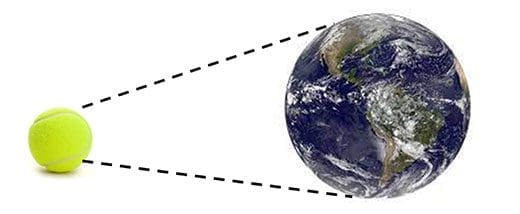By Pat Melgares, K-State Research and Extension news service
Manhattan, KS – Kansas State University entomologists are going to the nano world to take on many of the pests that stunt the growth of agricultural crops – and just may find a way to reduce a pesky summer insect, as well.
Jeff Whitworth, a field crop entomologist with K-State Research and Extension, said the university has received funding from the U.S. Department of Agriculture to create a new area of research focused on using nanotechnology in crop pest management.
“Seed treatments (which protect seeds and seedlings from early-season insect pests and diseases) came along 30 years ago, and then there were genetically modified crops to help with that, as well,” Whitworth said
“Well, in the next 20 years, we may lose those as ways to protect against pests and diseases, so we’ve got to come up with something new.”
Nanotechnology is a term given to areas of science, engineering and technology in which matter is manipulated to produce new structures, materials or devices. The National Institute for Occupational Safety and Health describes the technology as promising for such sectors as medicine, consumer products, energy, materials and manufacturing.
Whitworth said nanotechnology may help uncover ways to protect agricultural crops in the future while applying less pesticide.
“There is a lot of promise for nanotechnology to be used in agriculture,” said Amie Norton, a nanotechnology specialist formerly with the USDA but hired by K-State as a result of the new funding. “What we’re hoping is that we can bring down the cost of agricultural production, while increasing overall production.”
Norton said the hope is to build nanoparticles in K-State laboratories that carry lower levels of active pesticide ingredients, and then apply those structures to crop fields.
“The reason we can do that is because nano material has a larger surface area, so more of the pesticide is actually applied, even though we are using less material,” she said.
Nanoparticles are considered part of a bright new future for science and technology. By definition, a nanometer is one-billionth of a meter, so small that it cannot be detected by optical microscopes.
For perspective, however, consider that one sheet of standard copy paper is 100,000 nanometers thick. Or, one nanometer compares to a standard tennis ball similarly to how that same tennis ball compares to all of planet Earth.
Norton originally developed nanoparticles at the USDA out of grain. “We put silver and gold on that material; we made nano gold and nano silver,” she said. “Silver and gold is antimicrobial, which means it kills bacteria. What we found was that when we exposed mosquitos to that material, they were killed at a (greater) rate than what was in the literature. So we thought that was kind of neat.”
Whitworth said K-State’s project – which is funded for four years – is expected to take on treatments for such pests as the Hessian fly, corn rootworm, grasshoppers, termites – and, yes, even mosquitoes.
“We’re looking at a wide range of medical, veterinary, household and agricultural pests,” he said. “In most of these areas, we hope to do at least a cursory look to determine if there is potential for nanotechnology.”
“By the end of our four years,” Whitworth added, “we’ll have an idea about whether there’s a place for nanotechnology in agriculture. That’s what we’re shooting for.”













